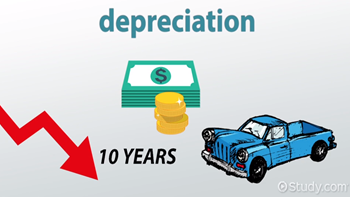Is Your Purchase An Asset Or An Expense?
First things first, what is an asset? An asset is a resource that your company owns that is used for a function of your business operations. It can be something tangible (vehicle, furniture, equipment, etc.) or intangible (goodwill, intellectual property, patents, etc.). Assets will always have a useful lifespan of greater than one year, and they may or may not go up in value. For example, buildings and land usually go up in value, but the large piece of machinery you have in the shop will likely decrease in value.

The full cost of an asset is not written off in one year like an expense. Because an asset is expected to last multiple years, it’s cost DEPRECIATES over multiple tax years. This depreciation occurs over time to EXPENSE a portion of the asset for each year it is used until the full amount of the asset is used up.
It is important to recognize that money spent on assets are NOT tax deductible. Money spent on expenses ARE tax deductible, which is why it so important to record the depreciation expense each year.

Intangible assets are usually a very large cost and your tax preparer will definitely want you to enter the transaction as an ASSET and not an EXPENSE, but will depreciate the cost over time. This can get tricky depending on the tangible items you buy. For example, you buy a tool for your business that you’ll be using for several years, and it costs $1,000. Do you enter it as an EXPENSE or an ASSET? How about the new desk set that cost $5,000 or the awesome updated computer that cost $3,000?
You should always check with your tax preparer for their recommendation but the IRS guidelines suggests that any amount of $2,500 or more for a resource that your company owns and uses for a function of your business operations should be recorded as an ASSET.
The first thing to consider when deciding if something is an asset or an expense is the cost. If it costs more than $2,500, you should consider entering it as an asset. However, that’s merely a guideline, and you must use your own discretion when choosing to expense a purchase in the year it was purchased rather than letting it depreciate over the next several years.
The next thing to take into account is your company’s overall financial situation, including what you anticipate for the future. If you choose to expense an item right away, you cannot claim any portion of the expense in the future. If your profitability is low or at a loss in the recent year(s), we recommend you enter the purchase as an asset and claim the depreciation over the coming years. This will not only improve your current year’s profitability but also move the expense to the coming years when you will hopefully have a greater profitability. This will also help bring down your overall tax rate.
What makes something an ASSET or an EXPENSE is not a quick or easy answer, but the results are lasting and can greatly impact your tax return. We encourage you to reach out to your Trusted Bookkeeper/Accountant or Tax Preparer for direction in your unique and personal situation.
.png?token=6adcf38ed58846e4f05e97718ba6eb6d)